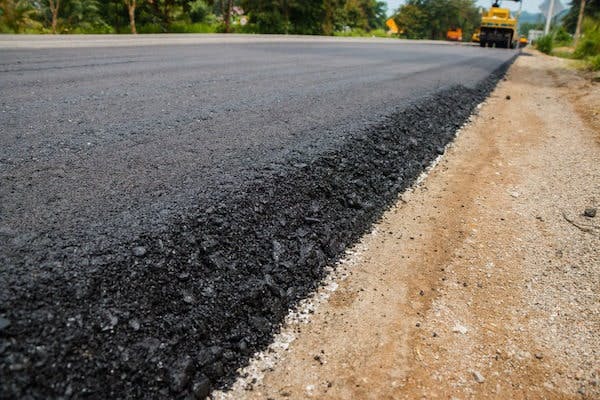Hot Mix Asphalt Paving: Redefining Business Building Landscapes
Opening the Secrets of Warm Mix Asphalt Technology
Discovering the depths of warm mix asphalt innovation discovers a globe where careful processes and precise solutions converge to form our roads and facilities. The combination of binders, fillers, and aggregates isn't just a building job however a calculated orchestration of sturdiness and performance.
Significance of Warm Mix Asphalt
Warm Mix Asphalt plays a vital role in contemporary facilities advancement due to its toughness and cost-effectiveness. As the most generally made use of paving material for roads, highways, and car parking lots, Hot Mix Asphalt supplies an array of advantages that contribute to its significance in building and construction projects.
The durability of Warm Mix Asphalt comes from its structure, that includes aggregates, binder, and filler products that are very carefully selected and blended to satisfy certain performance needs. This precise mix leads to a adaptable and solid sidewalk that can sustain regular use without substantial damage. Hot Mix Asphalt is 100% recyclable, more improving its sustainability and environmental advantages. Generally, the value of Warm Mix Asphalt in infrastructure growth can not be downplayed, as it remains to be a foundation of contemporary construction techniques.
Elements of Asphalt Mixes
The make-up of asphalt mixes consists of meticulously chosen accumulations, binder, and filler products that are critical for achieving certain performance requirements. Aggregates are the primary component of asphalt mixes, giving strength and stability. The binder, usually bitumen or asphalt cement, holds the accumulations together and provides flexibility and sturdiness to the mix.
The combination and proportion of these parts play a significant duty in establishing the quality and efficiency of the asphalt mix. Engineers meticulously make the mix to fulfill certain demands, thinking about factors like web traffic volume, climate problems, and sidewalk life expectancy. Appropriate option and harmonizing of aggregates, binder, and fillers are important for creating durable, long-lasting asphalt pavements.
Mixing and Manufacturing Methods

As soon as the accumulations are chosen, the binder, commonly asphalt cement, is contributed to bind the materials together. The binder's quality and amount significantly impact the mix's stamina, resistance, and versatility to ecological elements. In addition, fillers like hydrated lime or Portland concrete might be incorporated to improve specific features of the asphalt mix, such as its workability or dampness resistance.
During production, the accumulations and binder are heated up, normally in between 250-325 ° F(121-163 ° C ), to assist in mixing and ensure correct finishing of the aggregates. The blending procedure should be thorough to attain a homogeneous mixture that promotes the desired efficiency qualities of the asphalt. Various methods, such as batch blending or drum blending, are used to accomplish consistent and high-grade asphalt blends for building and construction jobs.
Variables Impacting Asphalt Efficiency
Elements affecting asphalt efficiency incorporate an array of variables that impact the sturdiness, long life, and total top quality of asphalt sidewalks. One vital variable is the quality of materials utilized in the asphalt mix.

Ecological conditions likewise influence asphalt efficiency. Temperature variants, dampness infiltration, and web traffic lots can all affect the architectural integrity of the pavement. Layout considerations, such as sidewalk density and drainage, are vital in making certain the long-term performance of the asphalt sidewalk. By meticulously considering these professionals, designers and aspects can maximize asphalt performance and improve the solution life of pavements.
Lasting Practices in Asphalt Innovation

WMA allows for the manufacturing and placement of asphalt blends at reduced temperatures compared to traditional hot-mix asphalt, resulting in lowered power consumption and greenhouse gas exhausts. The usage of permeable asphalt mixes can assist alleviate stormwater drainage concerns by allowing water to infiltrate via the pavement and right into the ground, advertising all-natural water filtration and recharge processes.
Verdict
In final thought, hot mix asphalt innovation plays a vital function in modern-day framework development because of its toughness and cost-effectiveness. By meticulously stabilizing parts, using appropriate mixing methods, and considering various factors, engineers can create top quality asphalt hot mix asphalt mixes that withstand hefty website traffic tons and severe climate condition. Accepting sustainable practices, such as making use of warm-mix innovations and recycled materials, better boosts the environmental kindness of asphalt technology.
Mixing and production strategies in warm mix asphalt technology involve the specific combination and processing of aggregates, binder, and fillers to produce a resilient and high-performance asphalt mix.Variables influencing asphalt performance encompass a variety of variables that influence the resilience, long life, and general top quality of asphalt pavements. Lasting methods in asphalt innovation include numerous campaigns intended at decreasing the environmental effect of asphalt production and paving processes. By integrating reclaimed asphalt sidewalk (RAP) and recycled asphalt shingles (RAS) into new asphalt mixes, the industry can considerably minimize the usage of raw materials and energy, while additionally reducing garbage dump waste.
WMA enables for the manufacturing and positioning of asphalt blends at lower temperature levels contrasted to typical hot-mix asphalt, resulting in reduced power usage and greenhouse gas emissions.